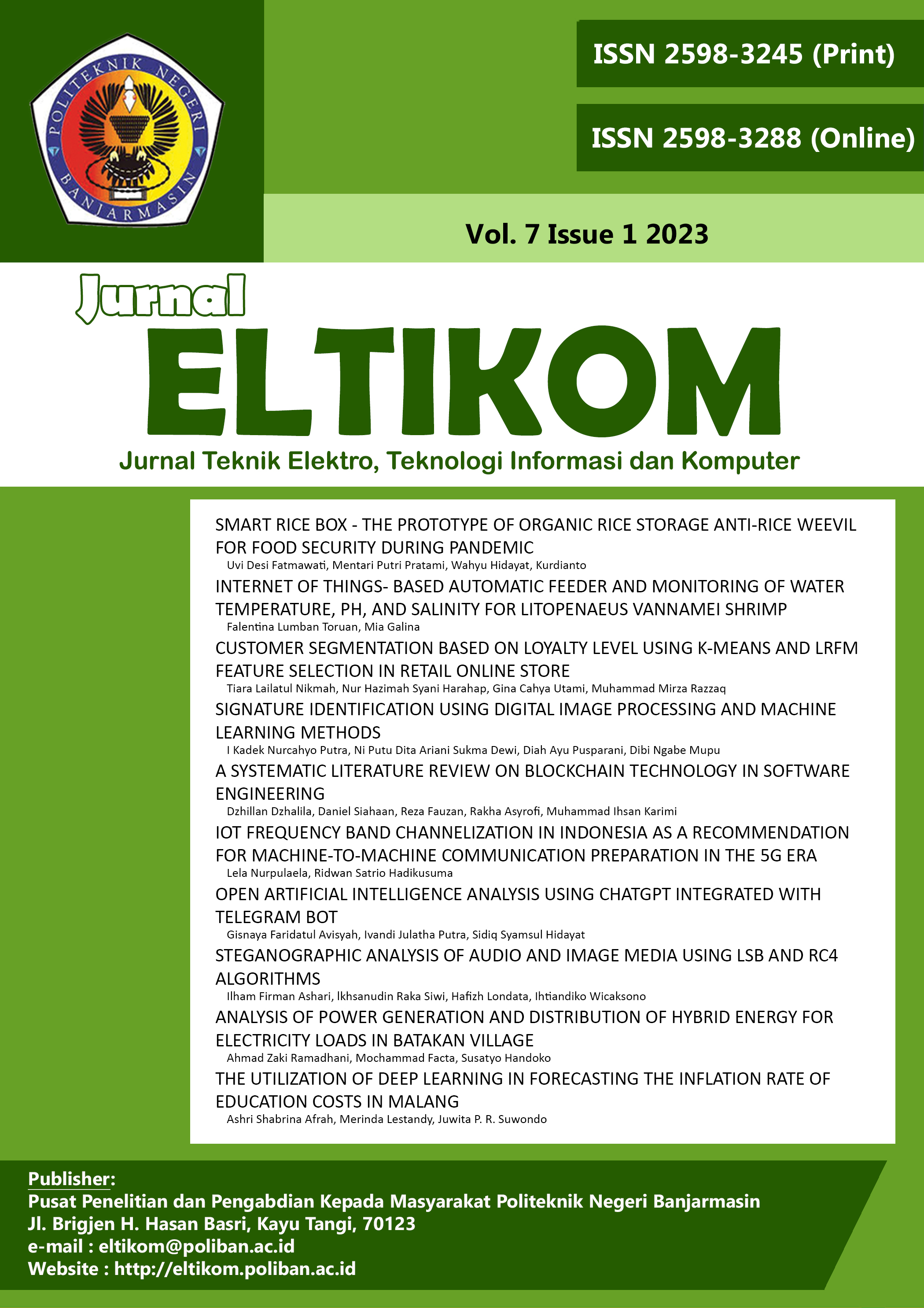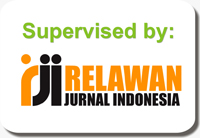Steganographic Analysis of Audio and Image Media using LSB and RC4 Algorithms
DOI:
https://doi.org/10.31961/eltikom.v7i1.583Keywords:
Audio, Image, Steganography, CryptographyAbstract
In the current digital era, it is deemed essential to ensure security and confidentiality of information when exchanging information through communication networks. This is done to allow recipients to receive the information from senders in its entirety without any interference from third parties who are not entitled to the information. Cryptography and Steganography are some useful methods to secure a confidential message, including the RC4 algorithm as one type of applicable method to secure the original message into a random secret message to make it remain unknown to others. One of the methods used in steganography to secure messages, including images, audio, video, and documents, is the least significant bit (LSB) algorithm. This study aims to analyze the comparison of the two-storage media, namely audio and images using LSB and RC4 in order to see the effect of the LSB and RC4 algorithms on the container media based on the aspects of imperceptibility, fidelity, recovery, and capacity. Having tested the imperceptibility aspect as indicated by the histogram of the image and the audio spectrum, it is clear that there is no difference between the image and audio before and after insertion. The fidelity test of the PSNR (Peak Signal to Noise Ration) resulted in an average value of > 30 dB, while the recovery test shows 100% success because there is no difference between the original message and after extraction. The capacity test indicates that the larger the size of the container media, the larger the message that can be inserted.
Downloads
References
A. P. Ratnasari and F. A. Dwiyanto, “Metode steganografi citra digital,†Sains, Apl. Komputasi dan Teknol. Inf, vol. 2, no. 2, 2020.
A. E. Setiawan, A. Pasaribu, and A. E. Setiawan, “Penerapan Steganografi Pada Citra Digital Menggunakan Metode Least Significant Bit (LSB) Kombinasi RC4 Berbasis Mobile Android,†Aisyah J. Informatics Electr. Eng, vol. 2, no. 1, pp. 18–28, 2020.
R. Saha, G. Geetha, G. Kumar, T.-H. Kim, and W. J. Buchanan, “MRC4: a modified rc4 algorithm using symmetric random function generator for improved cryptographic features,†IEEE Access, vol. 7, pp. 172045–172054, 2019.
S. W. Siahaan, L. C. Purba, K. D. R. Sianipar, and I. Gunawan, “Pengamanan Data Teks Menggunakan Algoritma Kriptografi RC4 Dari Serangan Brute Force,†TECHSI-Jurnal Tek. Inform., vol. 11, no. 2, pp. 229–236, 2019.
D. Novianto, “Implementasi Keamanan Berkas Menggunakan Teknik Steganografi dan Algoritma Kriptografi menggunakan Metode Least Significant Bit (LSB) dan Algoritma Rivest Code 4 (RC4),†JUTIM (Jurnal Tek. Inform. Musirawas), vol. 3, no. 2, pp. 92–98, 2018.
R. Rifki, A. Septiarini, and H. R. Hatta, “Cryptography using random Rc4 stream cipher on SMS for android-based smartphones,†IJACSA) Int. J. Adv. Comput. Sci. Appl., vol. 9, no. 12, 2018.
A. E. D. Riad, H. K. Elminir, A. R. Shehata, and T. R. Ibrahim, “Security evaluation and encryption efficiency analysis of rc4 stream cipher for converged network applications,†J. Electr. Eng., vol. 64, no. 3, pp. 196–200, 2013.
N. Nursobah, S. Lailiyah, and A. Kurnia, “Implementasi Steganografi Pesan Teks ke dalam File Aaudio (. MP3) dengan Algoritma Advanced Encryption Standard dan Least Significant Bit,†J. IT, vol. 10, no. 2, pp. 84–100, 2019.
O. Soleh, F. Alfiah, and B. Yusuf, “Perancangan Aplikasi Steganografi Dengan Teknik LSB dan AlgoritmaRC4 & Base64 Encoding,†Technomedia J., vol. 3, no. 1 Agustus, pp. 1–15, 2018.
H. Antonio, P. W. C. Prasad, and A. Alsadoon, “Implementation of cryptography in steganography for enhanced security,†Multimed. Tools Appl., vol. 78, no. 23, pp. 32721–32734, 2019.
I. F. Ashari, “The Evaluation of Audio Steganography To Embed Image Files Using Encryption and Snappy Compression,†Indones. J. Comput. Sci., vol. 11, no. 2, 2022.
I. F. Ashari, A. W. Bhagaskara, J. M. Cakrawarty, and P. R. Winata, “Image Steganography Analysis Using GOST Algorithm and PRNG Based on LSB,†Techno. Com, vol. 21, no. 3, pp. 700–713, 2022.
N. Singhal and J. P. S. Raina, “Comparative analysis of AES and RC4 algorithms for better utilization,†Int. J. Comput. Trends Technol., vol. 2, no. 6, pp. 177–181, 2011.
P. Prasithsangaree and P. Krishnamurthy, “Analysis of energy consumption of RC4 and AES algorithms in wireless LANs,†in GLOBECOM’03. IEEE Global Telecommunications Conference (IEEE Cat. No. 03CH37489), 2003, vol. 3, pp. 1445–1449.
U. A. Anti, A. H. Kridalaksana, and D. M. Khairina, “Steganografi Pada Video Menggunakan Metode Least Significant Bit (LSB) Dan End Of File (EOF),†2017.
I. F. Ashari, “The Evaluation of Image Messages in MP3 Audio Steganography Using Modified Low-Bit Encoding,†Evaluation, vol. 14, no. 2, 2021.
Downloads
Published
How to Cite
Issue
Section
License
Copyright (c) 2023 Jurnal ELTIKOM : Jurnal Teknik Elektro, Teknologi Informasi dan Komputer

This work is licensed under a Creative Commons Attribution-NoDerivatives 4.0 International License.
All accepted papers will be published under a Creative Commons Attribution 4.0 International (CC BY 4.0) License. Authors retain copyright and grant the journal right of first publication. CC-BY Licenced means lets others to Share (copy and redistribute the material in any medium or format) and Adapt (remix, transform, and build upon the material for any purpose, even commercially).




